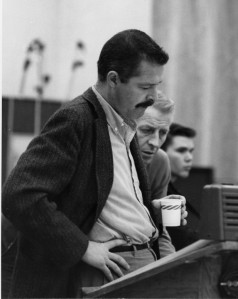
Around ten years ago I sat down to transcribe the first track off Bill Holman’s first major self-led big band album “In a Jazz Orbit,” and before I knew it I had written out all 9 tracks. I had been listening to that record over and over for years and both enjoyed it to pieces and found the twists and turns of each track inexplicable. I simply HAD to know what was under the hood. So what started as a curiosity turned into a masterclass on form, counterpoint, orchestration, balance, and big band performance. And it all started with the first track: Kissin’ Bug.
A brief history of “form” in the big band
The biggest takeaway from transcribing this chart was Holman’s tight use of form. After countless listens, once I wrote it out it blew my mind to realize that this entire arrangement (minus the intro, outro, and two single bars used to kick off a solo) is entirely “in-form.”
Form in the Swing Era
To better explain what I mean, let’s first put this 1957 arrangement into historical context by looking back at the conventions of the music Holman grew up listening to – the Swing Era. Check out a tune like Count Basie’s “Swingin’ the Blues.”
This 12-bar blues piece has chorus after chorus of a blues form that grows in steps throughout the runtime – there is no intro, and it’s not until after the 4th chorus that we get a 4-bar interlude. After this we get a form that looks like this:
Chorus 1 – Head
Chorus 2 – Head w/ pno solo
Chorus 3 – Head w/ brass
Chorus 4 – Bone chorus
4-bar interlude
Chorus 5 – Tenor solo
4-bar “delayed” head
Chorus 6 – Tpt solo
6-bar modulating interlude
Chorus 7 – Tenor solo
Chorus 8 – Shout 1
Chorus 9 – Tpt solo
Chorus 10 – Shout 2 w/ drum solo
Chorus 11 – Shout 3 (peak shout)
8-bar Ending
The important thing to note in this context is that every piece of interlude material is isolated from the 12-bar blues choruses.
Let’s also take a quick look at Artie Shaw’s “Man From Mars.”
This uses an AABA head as the template for the overall form. Besides the 4-bar intro, there are two main deviations – a 4-bar interlude inserted to kick off the tenor solo and a 4-bar drum solo inserted to kick off the clarinet solo.
This was common in the swing era – When you need extra material, you simply insert it between your choruses. Interludes were commonly used to break up an arrangement (especially around the halfway point, like the 6-bar key change in Swingin’ the Blues) or to set up a solo or shout chorus. Contrasting this, each chorus was self-contained and fully represented. This made for complex arrangement forms that were difficult to reproduce with an improvising small group as you either needed the full band to know the intricacies of the arrangement, or you needed a much more detailed leadsheet on the stage – but each individual chorus was more or less “standard” as a self-contained run-through of the tune.
Advancement in Form in the Bebop Era
While the swing era had its fair share of small group jam sessions, the subsequent early days of the bebop era took the jam session concepts and more fully removed the arrangements (stripping performances down to brief intros and evenly-spaced choruses) and sometimes even ejecting head melodies entirely, with a primary focus on improvising.* This shifted the balance and made knowledge of common forms and chord progressions much more important than knowledge of a particular unique arrangement. Because the music was more informally club-based and relied less on arrangement compared to the big band era, this generation of players adapted to improvising across performance that was a relentless succession of passes through the tune’s base form, without interludes and extensions. In the bebop era, the form was constant, and very rarely was it broken up.
This developed further once musicians quickly adapted these new standards back into orchestrated music, and heads, interludes, and other arranging/form tricks came back into play, albeit with differences from the swing era’s style.
Which brings us back to Bill Holman.
Not only is Kissin’ Bug almost entirely “in-form,” the entire album is almost entirely “in-form.” Instead of inserting his interludes, he lays them flat across the form (often starting or ending in places you would not expect), which creates some unexpected bursts of energy. This isn’t better or worse than the “insert” style that faded post-swing era, but it’s important to know where Holman is coming from.
To visualize this, considering this common swing era interlude style as detailed above in the Basie and Shaw tunes…

…compared to this common Holman/bebop era interlude style where the interlude material happens while dovetailing and overlapping across the chorus…
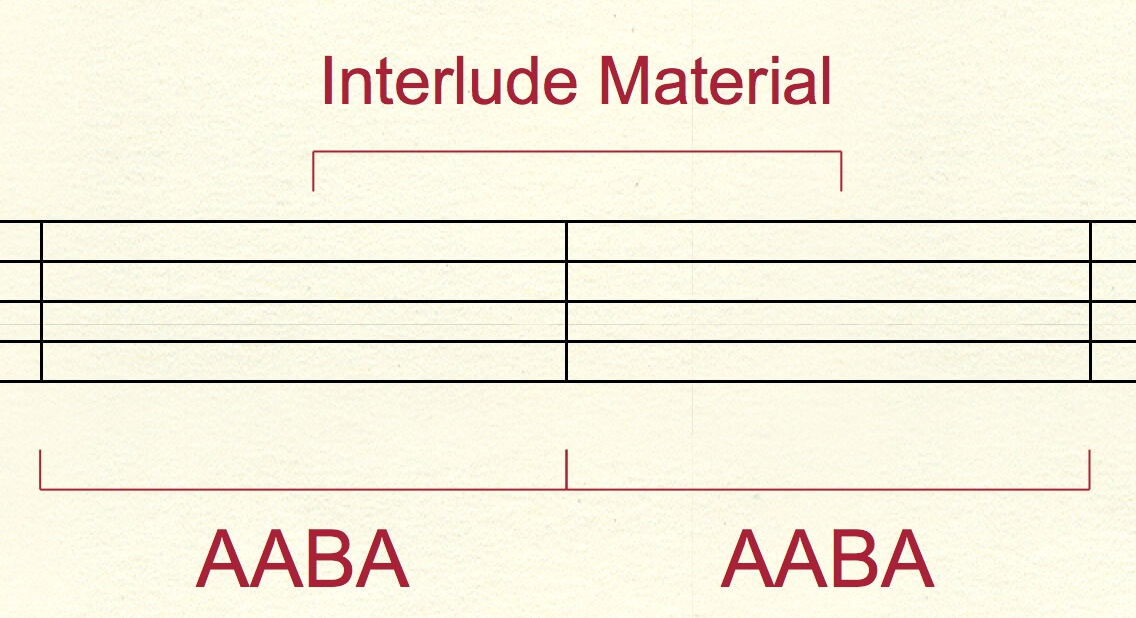
Of course he also knows the swing tradition thoroughly – he even makes a strong personal statement by not only drawing all his cover tracks for this album out of earlier pop and jazz instead of recent bebop and art jazz tunes, but he leads the entire album off with an obscure Billy Strayhorn piece that premiered in the dying days of the swing era. Holman knows his history, and here is pays tribute to it – in starting the album with these covers, it’s as if he is asking for the blessing of his childhood idols before he can continue on with his original pieces.
Simplicity of form leading to complexity of arrangement
What exactly is this “in-form” interlude writing? A short and sweet example is at 1m35s – the brass play a shout-style variation on the bridge melody (with saxes in tow), which dovetails down in sax backgrounds under a trombone solo. But the trombone solo starts in the 2nd half of the bridge. Holman could have dipped into his swing roots and created this as an interlude “insert” but instead wrote the material overlapping with the chord progression.
One of my favorite examples on this album shows up in Kissin’ Bug at the growing shout chorus that starts at 3m01s. In this AABA chorus, we first get a pretty standard pre-shout phrase that fills the entire A section with material referencing the original Strayhorn head – this section to me sounds like an improvisor developing and twisting the head into their own style.
Holman’s shout chorus then really starts at the A’, at 3m17s. However, he now begins to recompose the original material and chords, replacing them with a dizzying 3-dimension waterfall of 13(b5) chords, a refreshing set of voicings following the few previous bars of piercing unison octave brass. To make sure he ties this madness down to some kind of reference point, the first chord of this section is Bb13(b5) – the V7 of the key of the moment, Eb major.
Speaking of the key – you should know that Holman started the arrangement in Bb major but modulated to Eb midway through the piece, before this moment.
Roughly 6 bars into this A’, Holman modulates back to Bb. For bars 7 and 8 of A’, safely back in the original Bb, Holman references the original Strayhorn bridge melody. Which means that this shout chorus bridge has two keys, and both a set of newly composed material and original Strayhorn material.
Finally, we arrive at the B section, which is now, in retrospect, the “true” shout chorus. For the first four bars we get this shout chorus payoff directly quoting the head. And then… a drop off. The last four bars of the bridge have given way to a bass solo. This deceptively sounds like a 4-bar insert, but in fact is perfectly “in-form.”. This entire shout chorus, in phrases of 6 bars with mid-phrase modulation and all, is entirely “in-form” – 32 bars of AABA, nothing more, nothing less.
Finally, once we get to the last A”, we get a recap of the head.
So to sum up this AABA chorus:
A – pre-shout chorus in Eb
A’ bars 1-6 – shout chorus on the V7 chorus, new harmony, modulates to original Bb
A’ bars 7-8 – “true” shout chorus setup, in Bb
B bars 1-4 – shout chorus directly using “old material”
B bars 5-8 – bass solo
A” – original A”
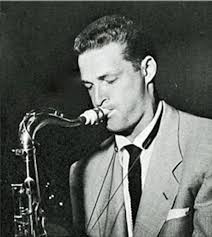
Look at this clever guy, dang
A few other form tricks
Holman is often known as a “counterpoint” or “unison” guy, but that’s not accurate.** He uses those techniques in balance with voicings, and both in balance with space for solos. For example, every “big” moment of the arrangement is created with a voicing, in concerted rhythm, or with big voicings and strong unisons in another instrument family to break it down a bit and help it transition in and out of surrounding material. The actual shout chorus of Kissin’ Bug is entirely concerted and devoid of counterpoint. At the same time, he doesn’t use a voicing until bar 20 – 0m36s – when the first B section appears. However, in a thoughtful move, notice how this first bridge is split into 2 halfs:
Bars 1-4 – Spread sax voicings with alto on the melody and trombones doubling in a lower octave to help bring that melody out amongst the crunchy voicings.
Bars 5-8 – Full blown horns in a louder dynamic
And then notice how the final bridge goes in reverse:
Bars 1-4 – Full blown horns in the loudest dynamic
Bars 5-8 – Bass solo
This sense of balance helps keep these arrangements interesting without being fully through composed to the point of being overwhelming.
Another great example of Holman reusing “old” material is his ending, which quotes his first apparent shout chorus AND the original melody’s last three notes. In those 4 bars, he brings together multiple key elements of the arrangement – not to be too predictable though, he references Strayhorn and Ellington again to voice out the last few notes with dense, textured voicings.
Why you should study Bill Holman
These inner-arrangement references, mirrors in form, callbacks of material, and recyclings of the source material are commonly-employed tools in Holman’s toolbox and define his style much more than simply calling him the counterpoint guy – which is why Holman has much to teach us, even if we do not favor counterpoint and unison as much as he does.
To recap, looking at the entire arrangement we’re presented with this full form:
4-bar intro
AABA (+2 bars)
AABA
(new key)
AABA
AA(orig key)BA
4-bar ending
It’s almost an exact four chorus arrangement, perfectly mirrored in the center with a key change midpoint and a 4-bar bookending intro and outro. And yet, when listening to it, it sounds far more disjointed, altered, uneven and through-composed.
The genius of Holman is his use of form and phrasing to surprise you without making you realize you’ve been surprised.
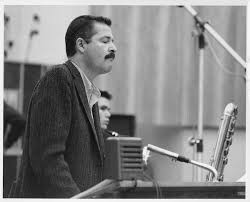
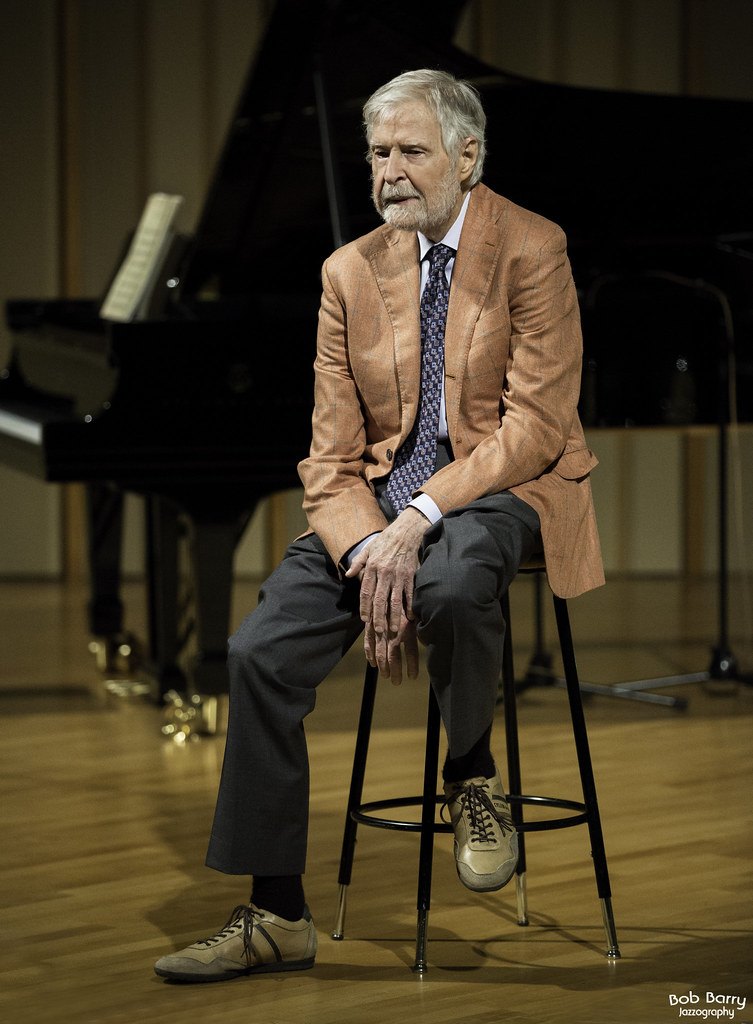
Bonus photo of Bill Holman wearing a killer jacket.
*Of course plenty of early bebopers used arrangement more than others, but generally it was reserved more for adding material into denser intros compared to creating mid-arrangement moments, and even then the “spirit” of social bebop involved focusing on choruses for improvisation and less on complex arrangements and orchestrations. It is in this environment, where players would get together with friends to jam or would show up at clubs to sit in, that the social language of jazz that we are most comfortable with today would take hold.
**I analyzed every bar of this score and found that 26.15% of the chart was unison and counterpoint, with 24.70% accounting for voicings – a ratio that would hold fairly consistently across all tracks on this album. Yes, Holman used counterpoint and unisons a bit more liberally than other composers, but the emphasis should be on his skill in balancing all aspects of writing.
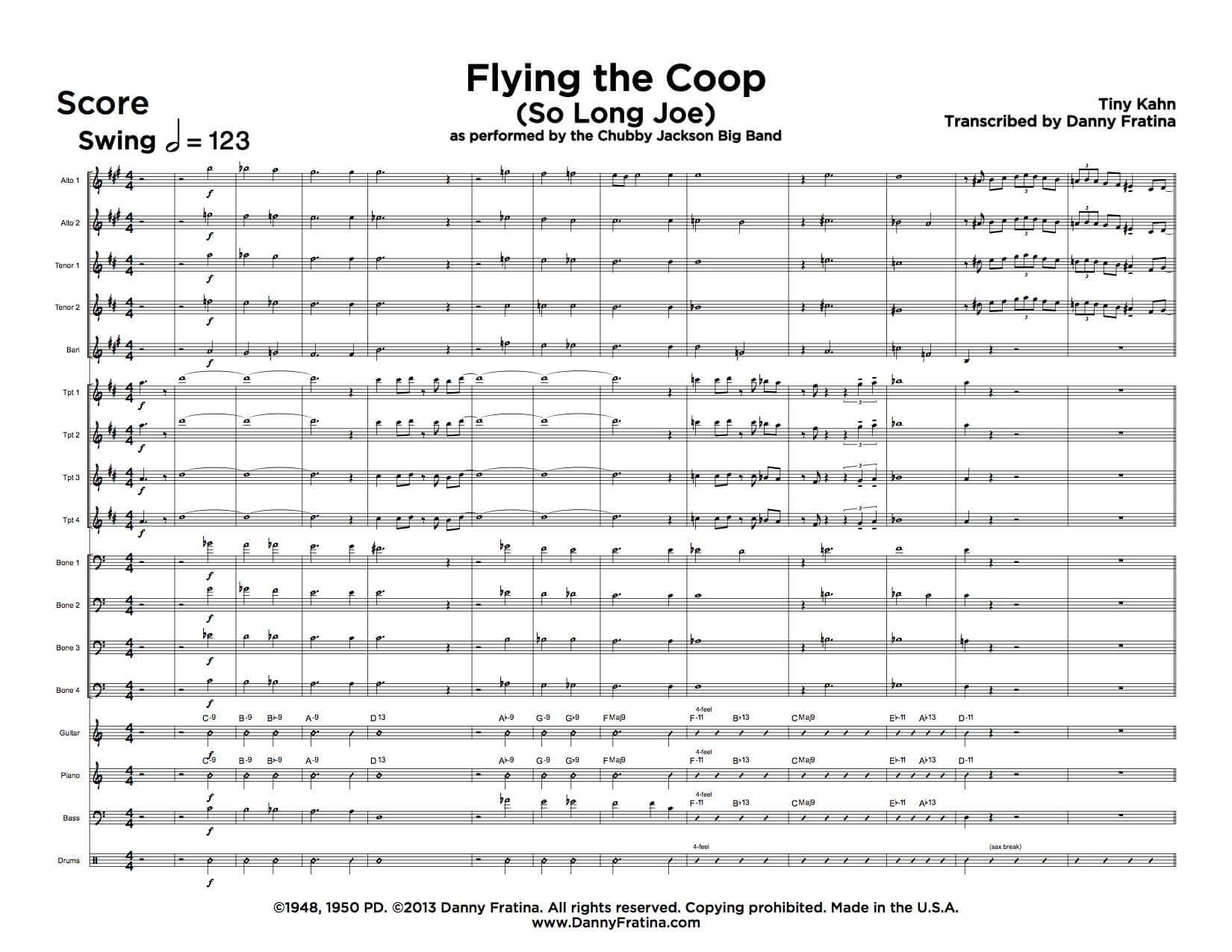
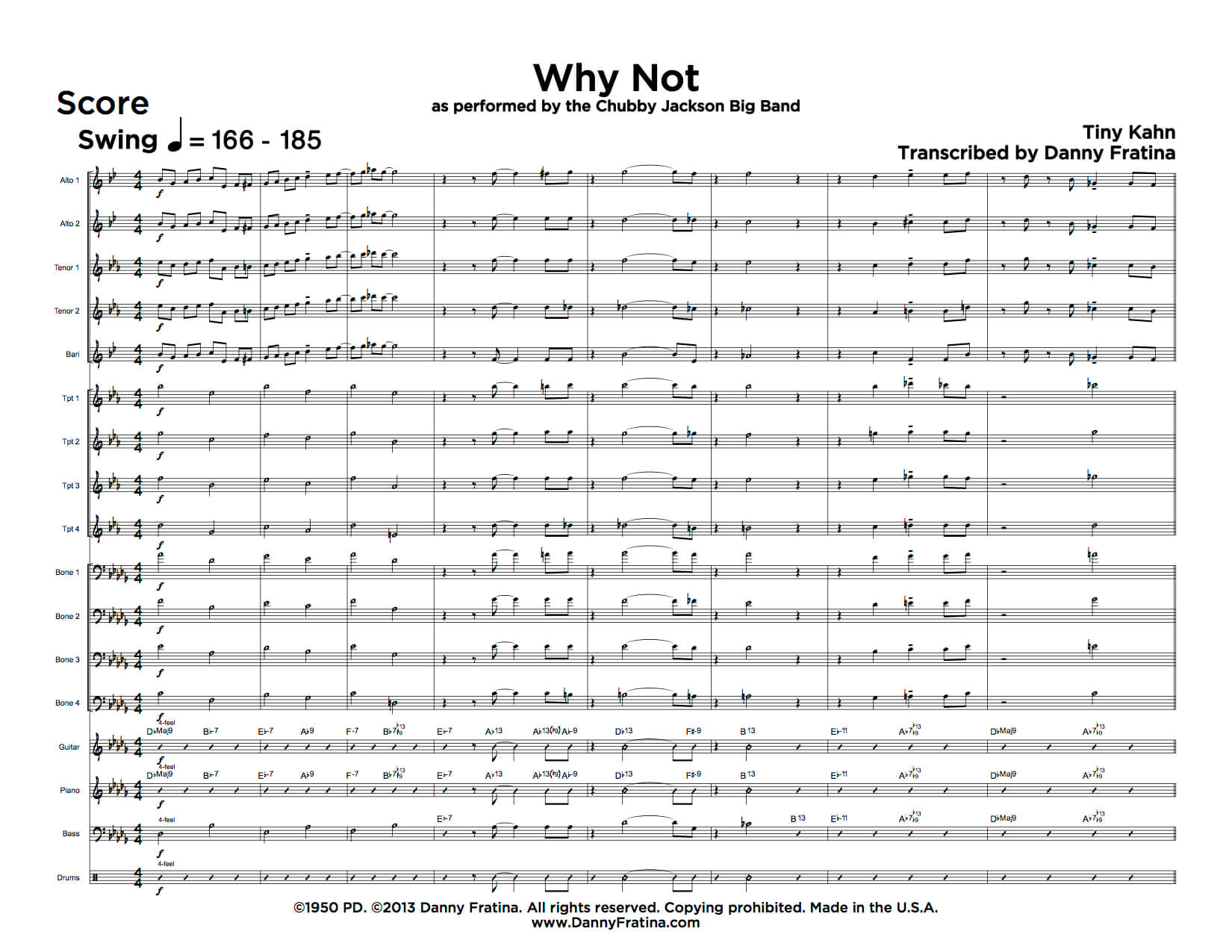
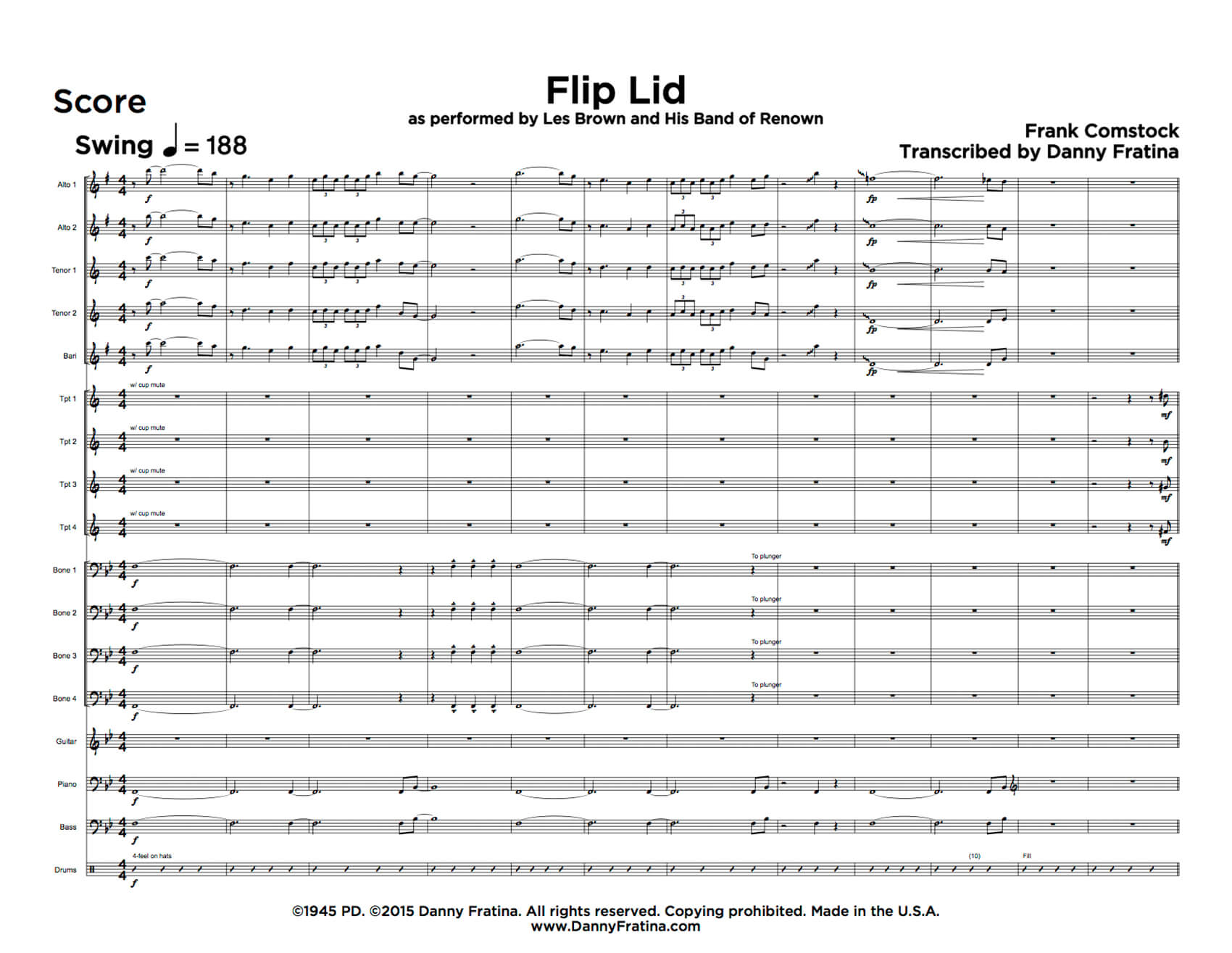

Leave A Comment